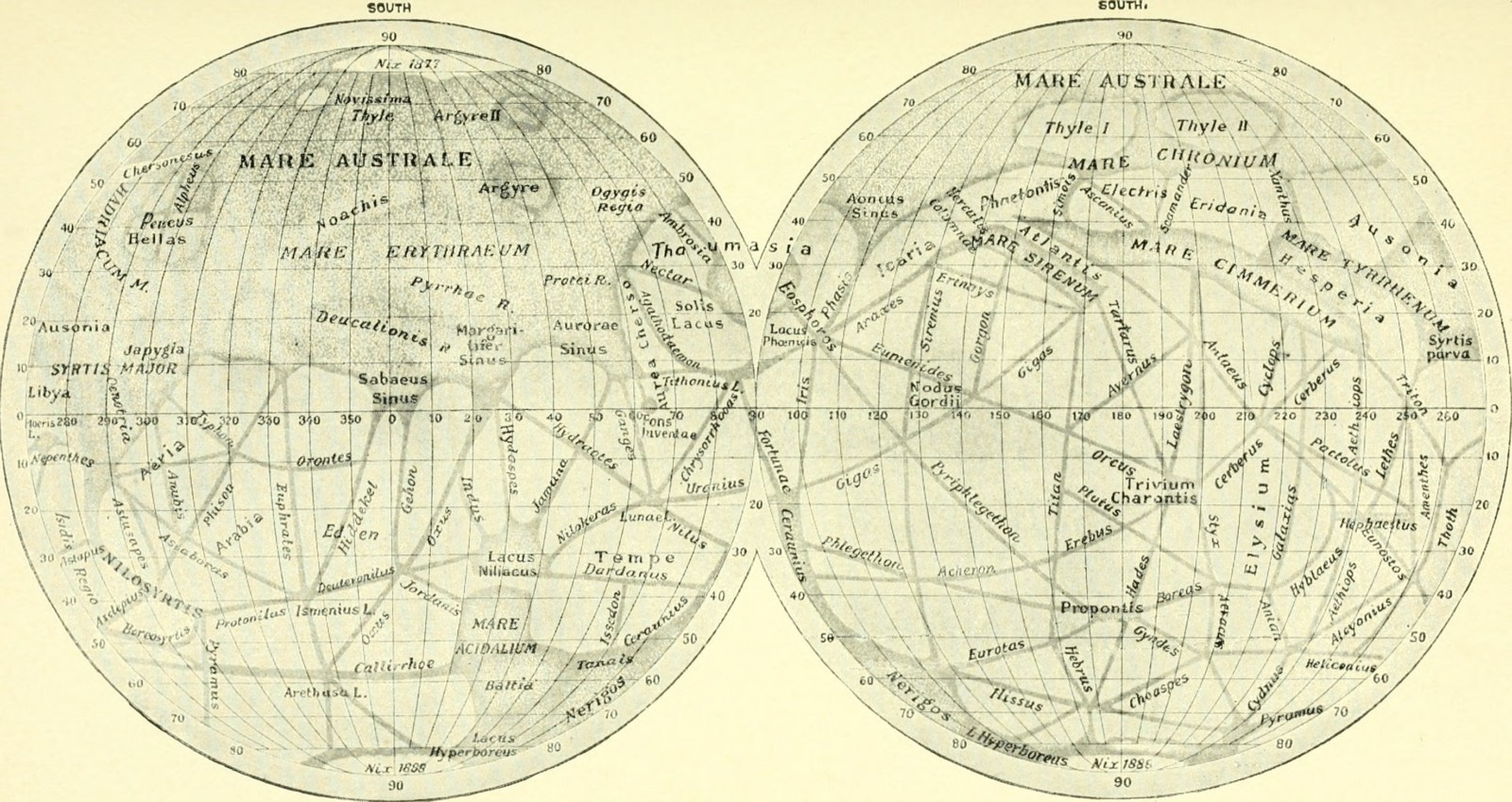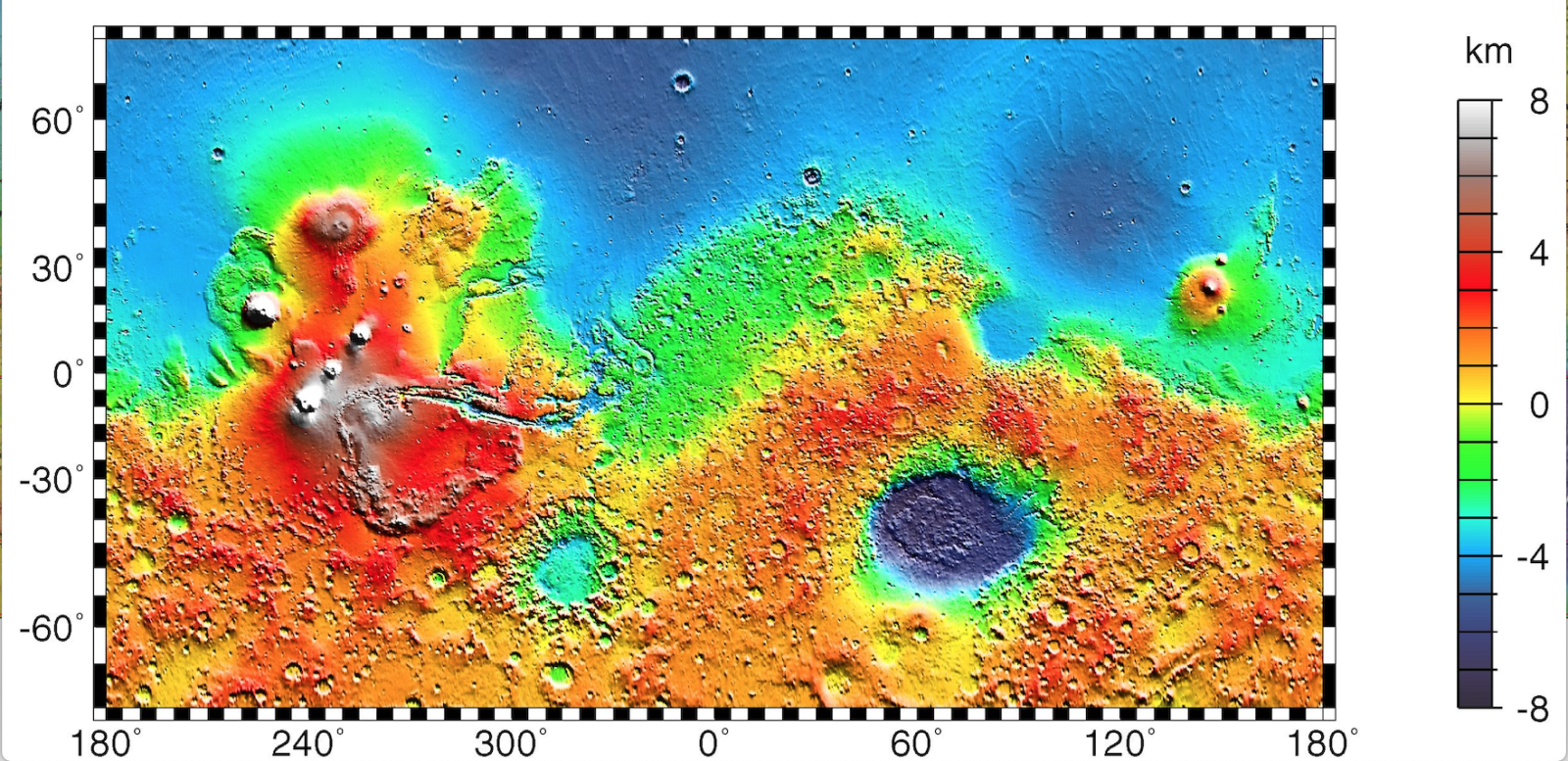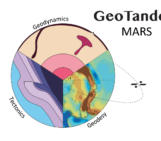
In this week’s blog post, we will learn more about the past of our neighbouring planet Mars. Kar Wai Cheng, PhD student at the Institute of Geophysics at ETH Zurich, is talking about the Martian dichotomy and how it could have formed.

Kar Wai Cheng
Humans have recognized Mars for a very long time. One of the earliest records of Mars is seen on a skymap in the tomb of an ancient Egyptian astronomer. By that time, apparently, humans have already noticed and tracked the trajectory of the planet among the other stars, and knew about its retrograde motion. But of course, with naked eyes and the limited knowledge of celestial bodies, for many years to us humans Mars was only a bright star with a strange path in the night sky. Not until the 16th century, Galileo became the first person to point his telescope at Mars. Technological advancement in telescopes later on allowed astronomers in the 17th – 18th centuries to observe basic features on the surface of the planet and start drawing maps of Mars. They saw some dark patches and not so dark patches (fig. 1). With their imagination and intuitive association to the home on Earth, they thought those are respectively the oceans and continents (there were some hypothesised ‘canals’ as well, but later shown to be non-existent).

Figure 1: An old map of Mars in 1894 (Smithsonian Institution. Board of Regents)
Fast forward to the 1960s and early 70s, when NASA launched the Mariner missions. After successfully obtaining the photo-maps of the whole planet, we humans for the first time could have a closer look at Mars’ actual terrain, and saw the topography variation across the planet that, maybe, explains the “oceans and lands”. On top of that, as seen in the ‘Preliminary Mars Chart’ (fig. 2), the southern highland is heavily cratered, meaning that the southern surface is very old, while the northern lowlands are less so, pointing to a much younger surface. The southern highlands are also observed to be highly magnetized, while not quite in the northern lowlands.

Figure 2: Mariner 9 Mars map (USGS/NASA/JPL)
Nowadays, we refer to the Martian crustal dichotomy as the difference in topography and crust thickness between the northern and southern hemisphere of the planet, which can be seen even more clearly in the newer MOLA topography map (fig. 3) brought by Mars Global Surveyor. As seen from the color scale there is a clear difference in surface elevation of roughly 5 km between the northern and the southern part of the planet. If you think about it, that is quite a lot. After all, this is even a bit more than how much the Tibetan Plateau stands out from sea level on Earth, not to forget that this is for the whole southern hemisphere! Combining topography and gravity data, the crust thickness of the planet can be inferred to show a north-south difference, with the crust on the southern hemisphere being 26 km thicker than the north. Again, just to give an idea on the numbers (and numbers only!), this difference is roughly on the order of that between the average thickness of continental and oceanic crust, although the average of the Martian crust itself, in general, is known to be thicker.

Figure 3: Mars Global Surveyor MOLA Topography (NASA/JPL)
Studies showed that the dichotomy must be formed very early before 4 Ga, well before the earliest surface record was in place. It is the largest and oldest geological feature we can observe on Mars. One may ask, well then why do we care about such an old feature at all? As you may already know, there is more and more evidence pointing to the existence of liquid water on the Martian surface earlier on. An existing topography will control where the water goes. With a dichotomy described above it would naturally be a single ocean in the northern hemisphere. An existing topography would also control where sediments and volcanic materials go, thus ‘renewing’ the surface. In other words, the dichotomy shaped the subsequent geology for millions or even billions of years. On the other hand, since the dichotomy is so old, studying its formation can give us a glimpse of what happened during planet accretion in the early stage of solar system evolution.
How did something like that happen? In fact, since the discovery of the dichotomy half a century ago, much effort has been put into finding out how it has formed. There are different hypotheses proposed by groups employing different modelling approaches. Earlier studies explored solely the mantle convection point of view. With an appropriate rheology in the Martian mantle, a big mantle plume in the interior of the planet can cause this preferential crust production on the southern hemisphere, however, the time needed to form such a dichotomy is apparently longer than observations hinted. Others modelled the process of the collision between two (proto-) planets and looked into the most probable scenarios where a giant impact scooped out some crust and made a hole in the north. In the recent years, the focus is more on a ‘hybrid’ model – first a giant impact creates a huge patch of thermal anomaly, and the subsequent evolution in the interior and its relation in forming the dichotomy is investigated.
Just as any other open questions in science, nature will not throw us the answer right away and we will not figure it out overnight, but we can get to the truth closer step by step. One exciting thing is that there have been very active on-going missions on Mars. Those will surely benefit our understanding of the Martian interior, which in turn gives us more confidence when ‘travelling’ and exploring backwards in time. For example, part of the goals of the Insight mission is to learn more about the mantle structure and core size. These are very relevant for posing better constraints to mantle convection modelling. By knowing more about the present, we can anticipate opening a door (closer) to the past!
References: [1] Watters, T., McGovern, P., & Irwin III, R. (2007). Hemispheres Apart: The Crustal Dichotomy on Mars. Annual Review Of Earth And Planetary Sciences, 35(1), 621-652. doi: 10.1146/annurev.earth.35.031306.140220 [2] Zhong, S., & Zuber, M. (2001). Degree-1 mantle convection and the crustal dichotomy on Mars. Earth And Planetary Science Letters, 189(1-2), 75-84. doi: 10.1016/s0012-821x(01)00345-4 [3] Marinova, M., Aharonson, O., & Asphaug, E. (2008). Mega-impact formation of the Mars hemispheric dichotomy. Nature, 453(7199), 1216-1219. doi: 10.1038/nature07070 [4] Golabek, G., Keller, T., Gerya, T., Zhu, G., Tackley, P., & Connolly, J. (2011). Origin of the martian dichotomy and Tharsis from a giant impact causing massive magmatism. Icarus, 215(1), 346-357. doi: 10.1016/j.icarus.2011.06.012 [5] Citron, R., Manga, M., & Tan, E. (2018). A hybrid origin of the Martian crustal dichotomy: Degree-1 convection antipodal to a giant impact. Earth And Planetary Science Letters, 491, 58-66. doi: 10.1016/j.epsl.2018.03.031




